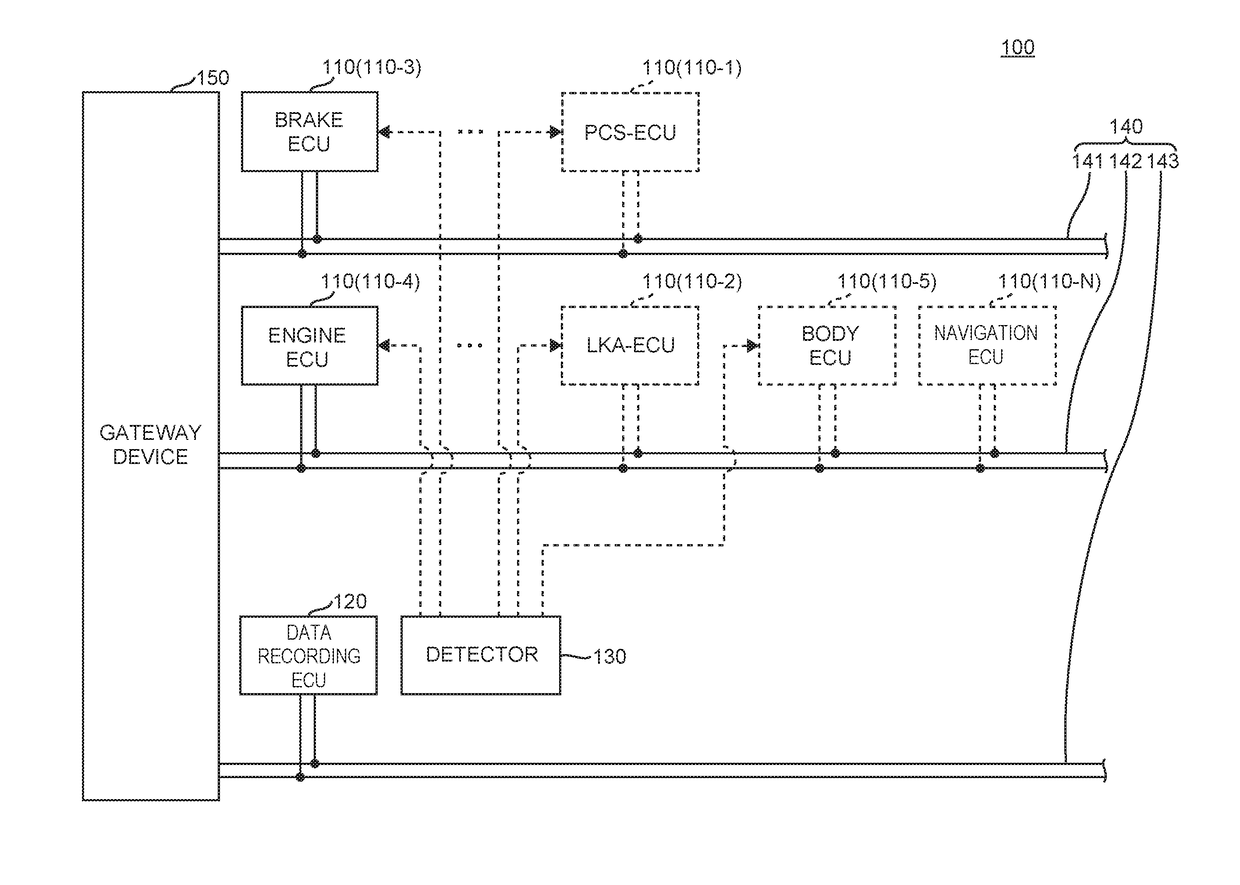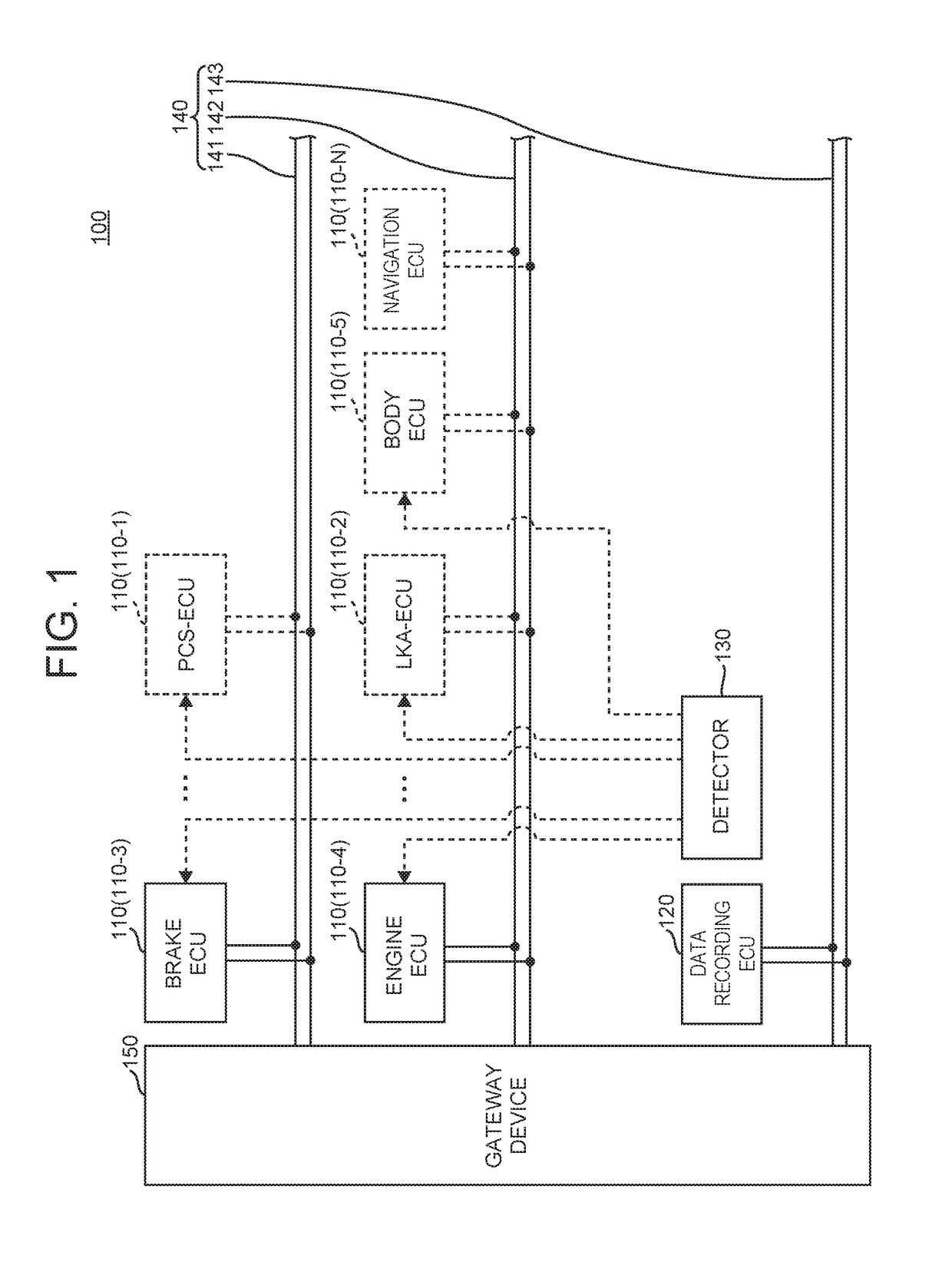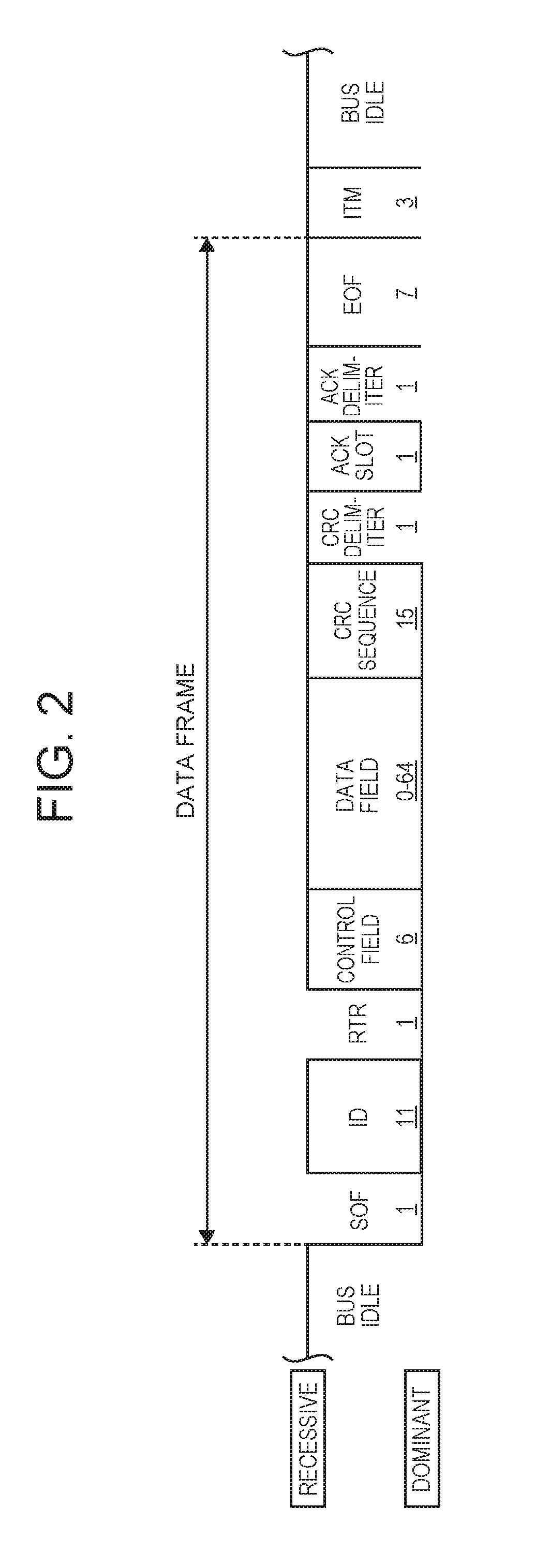In-vehicle control device and in-vehicle recording system
a technology of in-vehicle control and recording system, which is applied in the direction of external condition input parameters, instruments, transportation and packaging, etc., can solve problems such as difficulty in taking preference or thinking, unplanned or unplanned behavior, and occupants may distrust the control of the driving assist devi
- Summary
- Abstract
- Description
- Claims
- Application Information
AI Technical Summary
Benefits of technology
Problems solved by technology
Method used
Image
Examples
first embodiment
[0057]FIG. 1 illustrates one example of the configuration of the in-vehicle recording system 100 in the first embodiment.
[0058]The in-vehicle recording system 100 includes ECUs 110 (a pre-crash safety (PCS)-electronic control unit (ECU) 110-1, a lane keeping assist (LKA)-ECU 110-2, a brake ECU 110-3, an engine ECU 110-4, a body ECU 110-5 . . . and a navigation ECU 110-N), a data recording ECU 120, a detector 130, a controller area network (CAN) 140, and a gateway device 150.
[0059]The in-vehicle recording system 100, which is mounted in a vehicle, records status data prescribed for each type of the event, when the event of any prescribed type is detected. Hereinafter, a term “vehicle” refers to the vehicle that incorporates the in-vehicle recording system 100 unless otherwise specified.
[0060]A term “event” refers to, for example, the phenomenon that occurs in a vehicle that is controlled based on such parameters as control values calculated for vehicle control or control signals gene...
second embodiment
[0370]An in-vehicle control device and an in-vehicle recording system of the second embodiment are different from the first embodiment in the point that the data recorded on the first recording region of the data recording unit 127 (the event ID, the status data before and after occurrence of an event, and the cumulative number of times of startup and time stamp data at the time of occurrence of the event) is not associated with the data recorded on the second recording region of the data recording unit 127 (the subsequent change data representing a subsequent change occurring after occurrence of the event, and the cumulative number of times of startup and time stamp data).
[0371]Since the second embodiment is similar in other aspects to the in-vehicle control device (data recording ECU 120) and the in-vehicle recording system 100 of the first embodiment, a description is mainly given of the difference from the first embodiment. In the description below, some of the drawings of the f...
third embodiment
[0381]An in-vehicle control device and an in-vehicle recording system of the third embodiment are different from those of the first embodiment, in the point that the data recorded on the first recording region of the data recording unit 127 is associated with the data recorded on the second recording region of the data recording unit 127 while the cumulative number of times of startup and the time stamp is not associated with the subsequent change data.
[0382]Since the third embodiment is similar in other aspects to the in-vehicle control device (data recording ECU 120) and the in-vehicle recording system 100 of the first embodiment, a description is mainly given of the difference from the first embodiment. In the description below, some of the drawings of the first embodiment will be used.
[0383]In the third embodiment, the data acquisition unit 124A acquires the cumulative number of times of startup and time stamp data at the time of occurrence of an event, and records the data on t...
PUM
 Login to View More
Login to View More Abstract
Description
Claims
Application Information
 Login to View More
Login to View More - R&D
- Intellectual Property
- Life Sciences
- Materials
- Tech Scout
- Unparalleled Data Quality
- Higher Quality Content
- 60% Fewer Hallucinations
Browse by: Latest US Patents, China's latest patents, Technical Efficacy Thesaurus, Application Domain, Technology Topic, Popular Technical Reports.
© 2025 PatSnap. All rights reserved.Legal|Privacy policy|Modern Slavery Act Transparency Statement|Sitemap|About US| Contact US: help@patsnap.com



